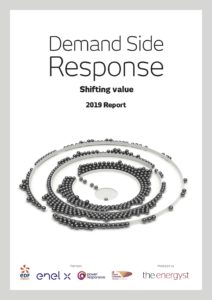
Wider access to the Balancing Mechanism and the launch of the European replacement reserve market (Terre), will provide new routes to market for demand-side response and flexibility more broadly. So what is Terre, and what is it worth?
In a nutshell, Terre is a pan-European reserve market that aims to enable cross border trading of a service similar to the GB Balancing Mechanism (BM) or short term operating reserve (STOR), says Matthew Roper, market architect at Elexon.
There are 11 participating transmission system operators and the project aims to harmonise products and dispatch.
“At the moment, each country has very similar products, but not exactly the same,” says Roper. Enabling standardisation of reserve and dispatch “is a big step forward,” he says.
Of the 11 TSOs participating, nine plan to go live from the start, now expected to be by the end of 2020. However, only five – France, Spain, Portugal, Switzerland and Italy – are physically connected to the GB market.
While the potential financial value of Terre to flexibility providers is hard to guess, Roper points to National Grid estimates of 1.1TWh yearly volume going through Terre.
“But that is just GB and the point of Terre is services can be offered to all TSOs,” he says.
As an illustration, Roper suggests an average £50/MWh clearing price equates to a potential GB Terre value of £55m. If the connected TSOs have a collective 5TWh requirement, that equates to a £250m pool – broadly on a par with the current ancillary services market.
Terre and the BM
Roper says it’s hard to predict how Terre will affect Balancing Mechanism volumes and the interplay between prices in the two products. His personal opinion is that Terre volumes may increase over time, and BM volumes decrease accordingly.
In terms of pricing, “We’ll have to wait and see,” says Roper. But it may take some time for the two markets to settle down. “I wouldn’t expect prices to be reflective for the first six months or so. After that, we will probably see trends emerging.”
However, National Grid and Elexon are using the Terre implementation process to also enable wider access to the GB Balancing Mechanism, a £1.1bn (gross) market previously the preserve of parties with a supply licence (or commercial arrangement with licensed supplier). That should enable aggregators to access a deeper pool of value.
Committed to wider BM access by year end
Despite the delay to Terre (the French TSO isn’t ready to go live), Roper says Elexon is “fully committed to ensure wider access is available by the end of 2019”. The aim is also to reduce complexity for non-licensed providers, which can access the Balancing Mechanism by becoming ‘virtual lead parties’ and use an online portal to manage their BM unit portfolio.
A code modification, P375, enables a move to asset metering – rather than boundary metering. This is because it can be difficult for the providers to work out how much electricity they have delivered if they use a boundary meter. Roper says that using an asset meter should make life easier for providers to demonstrate what volumes they have delivered.
A related modification, P376 aims to address issues around physical notifications for aggregators. At present, National Grid requires BM parties to provide a physical notification (PN) of the forecast MW profile of their portfolio in any period. But they may share a connection with other forms of generation or demand over which they have no control – making it difficult to forecast so they may be penalised or over rewarded even if they deliver as promised.
P376 intends to set a baseline PN methodology, that combined with asset metering changes, should enable BM parties to get paid accurately for what they deliver.
Same but different for end users
Roper thinks those changes should make the market more attractive to independent aggregators – and enable them to tap into a far larger market than ancillary services.
For end users, he says providing flexibility “will look the same, whether Terre, or BM, or BM Stor in that they will receive the same or similar dispatch notifications.”
However, playing in the BM/Terre versus ancillary markets will require end users to understand differences in requirements. For example, Stor provides availability and utilisation payments for delivery over a set window, whereas the BM and Terre are 24/7 markets. “Businesses will likely have times when they can be more flexible than others, so it is important to specify with providers when they can be flexible – and when they can’t,” says Roper.
For aggregators, the new markets raise questions about where they chose to place their flexibility. “If you get picked in both [Terre and the BM], you have to deliver in both,” says Roper. “So it might be quite tricky at the start.”
He suggests aggregators and other parties planning to become virtual lead parties take part in platform tests now underway.

This article was first published in The Energyst’s 2019 DSR Report.
The report provides a comprehensive snapshot of the DSR market, a survey of DSR providers and qualitative interviews with industrial and commercial firms, plus views from National Grid ESO, distribution network operators, consultants and other market actors.
Download your free copy here.
Related stories:
Does load DSR require a separate incentive?
EDF Energy: Flexibility is the key to Net Zero
DSR: Water firms, industrials and SMEs on what is working, what’s not
Charging reform ‘key to unlocking DNO flex’
UKPN: We’ll give flex every change before resorting to reinforcement
Terre and BM: Elexon opens market entry process for aggregators
National Grid works to open BM to all, prepares for Terre
New control desk ‘doubles small flex’ in BM
Can the Balancing Mechanism offset FFR price erosion?
National Grid outlines plans to bring all flex providers into Balancing Mechanism
Flexitricity aims for supply licence, eyes BM prize
Limejump: Aggregators will need a supply licence to survive
Follow us at @EnergystMedia. For regular bulletins, sign up for the free newsletter.



